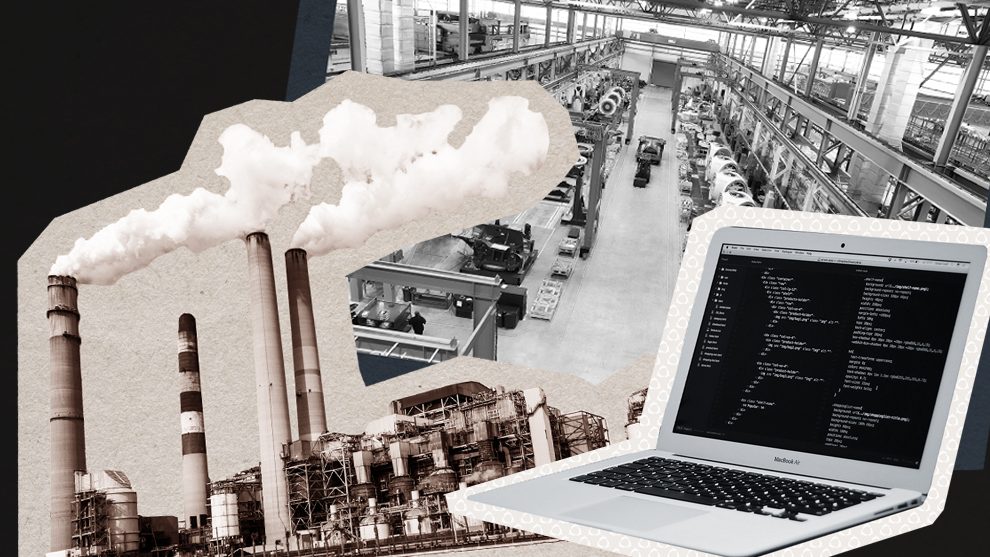COVID-19 arrived at a pivotal time in the evolution of the manufacturing industry. With the so-called ‘Fourth Industrial Revolution’ in full swing, the pandemic arrived, bringing with it supply chain difficulties, demand-side questions and safety concerns, even while major technological innovations were imminent. The result is a renewed emphasis on supply chain management, providing the impetus to accelerate advances in technology, process and workforce management.
Domestic Manufacturing
“I do think this is a moment for us to also be thinking more than ever about the value of resilience here in our own country,” says Canadian Deputy Prime Minister Chrystia Freeland. “And that’s one of the reasons … as we get ready for further coronavirus outbreaks, that we’ve been putting such an emphasis on made-in-Canada production.”1
While Freeland’s specific concerns in this case related to personal protective equipment, pharmaceuticals and other items put into sharper focus by COVID-19, it’s a question that pre-dates the pandemic: have Canada and other Western nations become too dependent on international supply chains? The benefits that hugely diversified just-in-time supply chains have had on bottom lines are hard to ignore, but at what cost to stability?
“We were the mythical frog floating in a pot of water on the stove, slowly being boiled alive without realizing it,” writes Munk Chair of Innovative Studies Dan Breznitz. “We lost sight of the critical requirements of a vibrant economy – one of which is good jobs. We no longer produce – indeed, we are not even able to develop – many of the things we need to run a modern, prosperous economy.”2
Technology in Sustainable Agriculture
Perhaps no aspect of the supply chain is more critical to a nation’s well being than that of food security. Technology has greatly impacted the agriculture sector in recent decades, and COVID-19 has re-emphasized the importance of securing local food production, supply and distribution.
“During the lockdown, you can sit comfortably working or talking to your friends or your relatives [using internet communications technology], while a vaccine will be developed within a year. But looking at the food supply globally, we’ve had so many problems,” noted Eugene Wang, the founder of a firm that makes meat substitutes from microalgae. “Why? Because I think we’ve underinvested in food and agriculture technology. It’s time to re-evaluate our approach to food and agriculture technology. We need more money and brainpower in this field.”3
Reinvesting in Manufacturing R&D
Not surprisingly, COVID-19 has delivered a decline in sales for many of our clients in the manufacturing industry. Those on the productions and operations side are choosing to utilize the time constructively by re-imagining key aspects of their process.
First and foremost has been the need for employee safety from the COVID threat, which underscores the importance of more automation in manufacturing facilities.
“We will see advancements in how IoT and augmented and virtual reality better enable the non-remote workforce,” predicts Manufacturing and Logistics professional Rajaram Radhakrishnan. “Smart factories and offices will increase, allowing critical functions that currently need to be overseen in person to be monitored remotely or, at a minimum, by fewer people.”4
Just as the first three industrial revolutions saw technological innovations leveraged across the board to propel advancements in industry (steam engines, steel/oil/electricity and the rise of computing power, respectively) 5G technology will truly allow manufacturers to harness the power of automation, AI and machine-to-machine communications in order to optimize operations, predict demand and maintenance schedules and create a more seamless integration of human and digital efforts.
Retooling the Workforce
For manufacturing operations this increased level of automation will require a retooling of the workforce. Humans will remain vital to success, but whereas past efficiencies were built upon specialized workers, a new STEM-focussed employee that can demonstrate broader technical proficiencies will provide value moving forward.5
Good Productions and Operations leaders will realize that if the updating process is not already in full-swing, then now is the time to move forward with it. With high unemployment, many candidates are available, but will need some level of retraining. Just as AI and machine learning technologies enable efficiencies in the manufacturing process, a well planned and developed learning system can provide a leg up in developing talent for tomorrow’s workplace. These modernized systems will provide the added benefit of attracting young workers to industries not always seen as modern.
With promising leaders currently available, potential managers with the capability to lead such a charge can be recruited.




